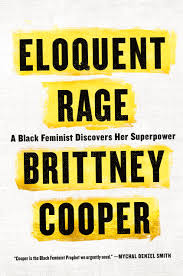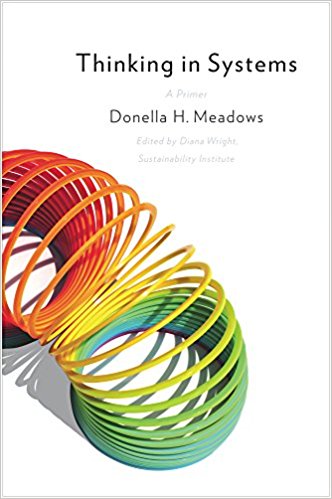“Put down your clever,
Let your partner affect you:
Tenets of Improv”
— review of Keith Johnstone’s Impro on HaikuBookReviews
 I recently had an interesting experience that revealed to me a big truth, a Big Truth, that is, in capital letters. It was an encounter with a client.
I recently had an interesting experience that revealed to me a big truth, a Big Truth, that is, in capital letters. It was an encounter with a client.
My business partner, David, and I were working with the senior team of an organization and our focus was diversity in their workplace, a conversation I have facilitated many times for other groups. But never in my experience has the dialogue gone so deep and been so real and raw, so honest and so true, so close to a point of real change.
We had engaged this group in some new and experiential ways of approaching the issue of diversity and I believe that focusing on embodied learning—getting them out of their heads, that clever intellectual space, and into their bodies, that place of real knowing—had helped them get to this place. But even as much as we had created the space, they deserve the credit for going on that journey and actually getting to that place where they could hear from their colleagues about the sometimes small and sometimes large ways they are made to feel unwelcome and unfit and dirty. Not just 20 years ago, but today.
 They heard people tell them about their first day of work in the organization, being told there were “racist rednecks” who worked there, that they’d just have to live with it, and that they’d better not be too sensitive to it. They heard—and I mean really heard—their colleagues describing what it’s like to mow their grass at home and have people drive by and yell “nigger” and throw eggs at them. In the year 2005, not 1965. They heard their co-workers telling them about colleagues who physically move away from them at work so as not to get “dirty” by being around them. And they heard about more subtle ways in which barriers are put between Self and Other in their workplace.
They heard people tell them about their first day of work in the organization, being told there were “racist rednecks” who worked there, that they’d just have to live with it, and that they’d better not be too sensitive to it. They heard—and I mean really heard—their colleagues describing what it’s like to mow their grass at home and have people drive by and yell “nigger” and throw eggs at them. In the year 2005, not 1965. They heard their co-workers telling them about colleagues who physically move away from them at work so as not to get “dirty” by being around them. And they heard about more subtle ways in which barriers are put between Self and Other in their workplace.
As a group, they heard themselves admit out loud that perhaps they are racist even though they had never thought of themselves that way—some realizing that they have enjoyed white privilege their whole lives without knowing it. Some listened to their own trembling voices tell what it’s like to be stereotyped as a white person who is Southern or who holds a certain kind of job. It was, in a word, beautiful, what was happening in that room. And not only beautiful, but significant.
The group made space in a special way to hear those stories. The hurt and pain of their colleagues brought the group to a place of real truth and honest awareness, unlike they had known before. They engaged around those stories with a combination of pain and anger, feeding a burgeoning passion to ensure that these things no longer could occur; if not out in the world then at least in their workplace. It was a rare moment of real insight, deep personal awareness—the kind that is absolutely necessary for change to occur. David and I knew that they were ready for change; they had—in their gut—“gotten it” and were ready to march together into the world to make the change that needed to occur.
“Could I see you outside?” their leader whispered to me in the fulcrum of the moment.
“I’ll take it from here,” he said as we stood outside the door.
Shock is just not a big enough word to describe what I felt. I pushed him for information about why—did he think we weren’t doing a good job, was he disappointed? “Oh, no, it’s been fantastic—just what we needed,” he assured me. “But I think we need to move into action planning at this point so we can have some concrete deliverables when we leave.” Funny how that word “but” erases all that has gone before it.
Speechless.
I wish I had asked him a different question: “What are you afraid of?”
 But of course, that is esprit d’escalier talking—that spirit of the stairs—all the things you should have said but you only think of after you’ve stormed out of the room (and presumably down some stairs).
But of course, that is esprit d’escalier talking—that spirit of the stairs—all the things you should have said but you only think of after you’ve stormed out of the room (and presumably down some stairs).
As David and I struggled with this man’s decision and watched him take the group into action planning in the afternoon, our tiny hearts were broken. Here was a group poised for real change and left only with a list of predictable action steps and due dates, unlinked to a vision of what could be since he had short-circuited the process before we engaged them in vision-making. What happened? Why did that leader feel the need, as David so aptly put it, “to reduce their very complex insights into action steps toward issues they had not yet fully articulated”? There was a whole big step missing, wasn’t there? I felt like I was in a Yogi Berra documentary: “It you come to a fork in the road, take it,” I could hear Yogi saying. Any fork will do.
 The group left with SMART action steps, that bane of every thinking man’s existence. Yes, indeedy, the action steps were Specific, Measurable, Attainable, Relevant and Time-bound. But were they inspired? Were they insightful? Were they meaningful and authentic and real and charged with the kind of passion that makes it impossible for a group of people to fail and makes it possible for them to achieve far more than they ever imagine possible? No. But they could have been, and they would have been. Instead, they were small and predictable and very, very manageable.
The group left with SMART action steps, that bane of every thinking man’s existence. Yes, indeedy, the action steps were Specific, Measurable, Attainable, Relevant and Time-bound. But were they inspired? Were they insightful? Were they meaningful and authentic and real and charged with the kind of passion that makes it impossible for a group of people to fail and makes it possible for them to achieve far more than they ever imagine possible? No. But they could have been, and they would have been. Instead, they were small and predictable and very, very manageable.
Why did this happen?
I believe the conversation and the possibilities inherent in it were both too messy and too scary. The container wasn’t evident—in fact, it is only because we didn’t have a neat, tidy, organizational container that the truths could emerge in the room at all. It was messy for us too—it’s much easier as a facilitator to move through an agenda with great predictability and speed, focused on coverage, getting through the notebook. It’s harder to put ambiguity in the room and be comfortable with the ambiguity of it all, if that makes sense. Where does the learning emerge? From listening or from doing? From hearing or from feeling? From checking it off the intellectual to-do list or from really getting it at a gut level? From your safety or your discomfort? As Madame Curie has said, “dissymmetry causes phenomenon.” But are we so intent on stability (and on getting good scores as facilitators) that we short circuit the necessary dissymmetry?
We had started the session with exercises from which the “rules” of improv could emerge: Put down your clever, embrace your ordinary, and say “yes” to everything. People relaxed into that permission to play and learn, to celebrate every action, to let their partner affect them, to go beyond the safety of words and intellectual business-speak. But it got too real, too potent, too messy. It—that great big learning—wouldn’t fit into the nice, neat little organizational boxes anymore. What, then, to do with it?
In a recent article in Fast Company entitled “Change or Die,” Alan Deutschman writes that "behavioral change happens mostly by speaking to people’s feelings….In highly successful change efforts, people find ways to help others see problems or solutions in ways that influence emotions, not just thought." Yes, that’s where we had gotten to in that room, to that special limbic portion of their brains and hearts where real change begins.
But feelings, my dear friends, are messy, aren’t they? They require something that is non-linear. David and I have been reading some interesting articles to frame our work, one of which was an article on “Wicked Problems: Naming the Pain in Organizations” that I was introduced to on Johnnie Moore’s blog. As we struggled after the session to make sense of what had happened, David sent me the following quotes from that article: "This non-linear process is not a defect, not a sign of stupidity or lack of training, but rather the mark of a natural learning process. It suggests that humans are oriented more toward learning (a process that leaves us changed) than towards problem solving (a process focused on changing our surroundings)." "…business and government persist in applying inadequate thinking and methods to solving problems. One reason they do that is it is possible, in fact easy, to tame a wicked problem. To do so, you simply construct a problem definition that obscures the wicked nature of the problem, and then apply linear methods to solving it (this sets off a chain reaction that perpetuates the problem).”
Racism is a wicked problem, so linear solutions are ineffective. As David wrote so brilliantly, “the action needed is learning (not problem solving), the issue is intrinsic and complex and is not easily containable so the action will look and feel a lot like chaos (messy, messy). By going straight to action planning, the leader of that group did a textbook taming of a wicked problem and has, therefore, perpetuated the problem.”
Is it possible that there are wicked problems in the world that can’t be flip-charted, bar-charted, pie-charted, Gantt-charted or action-itemed? Are there things that charts and lists and accountabilities can’t solve? Are there wicked problems that require nothing less than revealing one’s own self and talking to another human being openly and honestly before checking off the boxes?
~*~ 37 Days: Do it Now Challenge ~*~
Get messy. Put down your clever. Embrace your ordinary. Let your partner affect you. Say ‘yes’ to everything. Resist the temptation to make things “actionable” and predictable right away. Instead, follow the disturbance.
 I recently had an interesting experience that revealed to me a big truth, a Big Truth, that is, in capital letters. It was an encounter with a client.
I recently had an interesting experience that revealed to me a big truth, a Big Truth, that is, in capital letters. It was an encounter with a client. They heard people tell them about their first day of work in the organization, being told there were “racist rednecks” who worked there, that they’d just have to live with it, and that they’d better not be too sensitive to it. They heard—and I mean really heard—their colleagues describing what it’s like to mow their grass at home and have people drive by and yell “nigger” and throw eggs at them. In the year 2005, not 1965. They heard their co-workers telling them about colleagues who physically move away from them at work so as not to get “dirty” by being around them. And they heard about more subtle ways in which barriers are put between Self and Other in their workplace.
They heard people tell them about their first day of work in the organization, being told there were “racist rednecks” who worked there, that they’d just have to live with it, and that they’d better not be too sensitive to it. They heard—and I mean really heard—their colleagues describing what it’s like to mow their grass at home and have people drive by and yell “nigger” and throw eggs at them. In the year 2005, not 1965. They heard their co-workers telling them about colleagues who physically move away from them at work so as not to get “dirty” by being around them. And they heard about more subtle ways in which barriers are put between Self and Other in their workplace. But of course, that is esprit d’escalier talking—that spirit of the stairs—all the things you should have said but you only think of after you’ve stormed out of the room (and presumably down some stairs).
But of course, that is esprit d’escalier talking—that spirit of the stairs—all the things you should have said but you only think of after you’ve stormed out of the room (and presumably down some stairs). The group left with SMART action steps, that bane of every thinking man’s existence. Yes, indeedy, the action steps were Specific, Measurable, Attainable, Relevant and Time-bound. But were they inspired? Were they insightful? Were they meaningful and authentic and real and charged with the kind of passion that makes it impossible for a group of people to fail and makes it possible for them to achieve far more than they ever imagine possible? No. But they could have been, and they would have been. Instead, they were small and predictable and very, very manageable.
The group left with SMART action steps, that bane of every thinking man’s existence. Yes, indeedy, the action steps were Specific, Measurable, Attainable, Relevant and Time-bound. But were they inspired? Were they insightful? Were they meaningful and authentic and real and charged with the kind of passion that makes it impossible for a group of people to fail and makes it possible for them to achieve far more than they ever imagine possible? No. But they could have been, and they would have been. Instead, they were small and predictable and very, very manageable.





